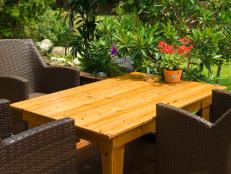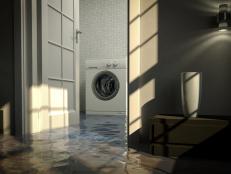Energy Answers: Weatherization Assistance Program
The federal government's Weatherization Assistance Program (WAP) has been helping low-income households improve energy performance and reduce utility bills since 1976. While weatherization programs come in all shapes and sizes, a majority of the energy retrofit work performed today has assistance from the federal government, through the WAP.
Plain and simple, the WAP exists to reduce energy consumption in homes. Leaky ducts, missing insulation and poor air sealing create uncomfortable living spaces. As a result, occupants crank up the heat or the air conditioning to compensate, increasing energy use and utility bills.
In 2009 the American Reinvestment and Recovery Act (ARRA) expanded the WAP program significantly to stimulate the economy, create jobs and reduce energy consumption.
The goals of weatherization through ARRA funding include:
- Increase the number of homes that qualify for the WAP. The maximum income level of families increased to 200 percent of poverty level under ARRA funding guidelines.
- Increase the amount of money available for each home. Under ARRA guidelines, homes eligible for the program could see up to $6,500 worth of energy retrofit work.
- Provide new job and training opportunities.
Although the WAP has greatly expanded, the process of improving home energy efficiency, comfort and healthfulness has remained the same. An energy audit, performed before weatherizing a home, includes an inspection of existing insulation, equipment, health and safety factors, and air sealing. Auditors can employ a wide assortment of tools during home energy audits.
Once the home energy audit is complete, a work order directs the weatherization contractors. After the work is completed, the auditor returns to verify improvements. This series of checks and balances helps ensure the right energy efficiency measures are taken and that the work is performed properly.
What are the benefits of the WAP to families?
On top of the financial benefits, weatherization improves the safety of homes. The WAP program installs smoke and carbon monoxide detectors — critical in ensuring the safety of the home's occupants. In addition to this, homes are tested for electrical and combustion appliance safety.
- Reduces energy consumption on a national scale, reducing our country's dependence on foreign oil.
- Reduces energy consumption on a local scale, decreasing air pollution from power plants.
- Reduces the environmental impact of homes by reducing carbon dioxide output by nearly a metric ton for each weatherized home.
- Increases the number of jobs in communities — according to WAP, each million dollars spent on the WAP creates 52 jobs. Weatherizing homes provides jobs for contractors and an opportunity to learn a skilled trade.
- Increases money spent in local communities through the purchase of goods and services to support weatherization efforts.
What improvements does the WAP make to homes?
Who qualifies for WAP?
How much money is spent on each house?
What is the application process?
How can contractors get involved?













































